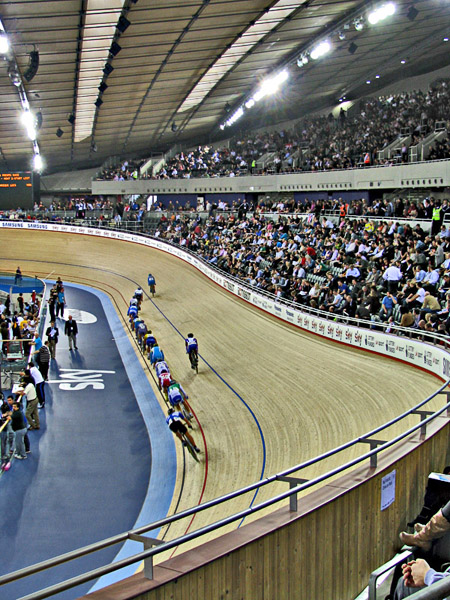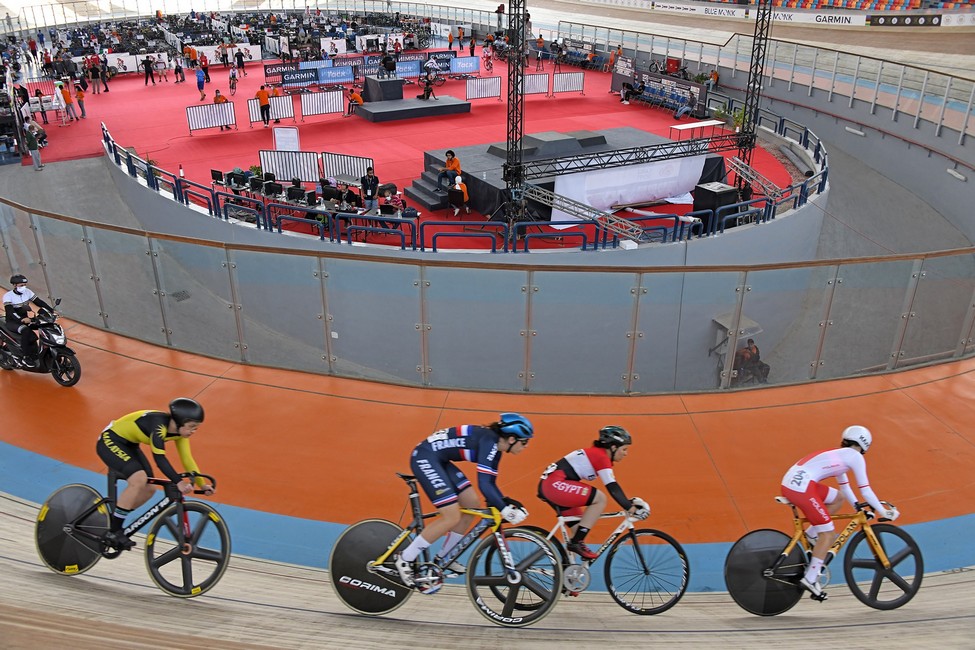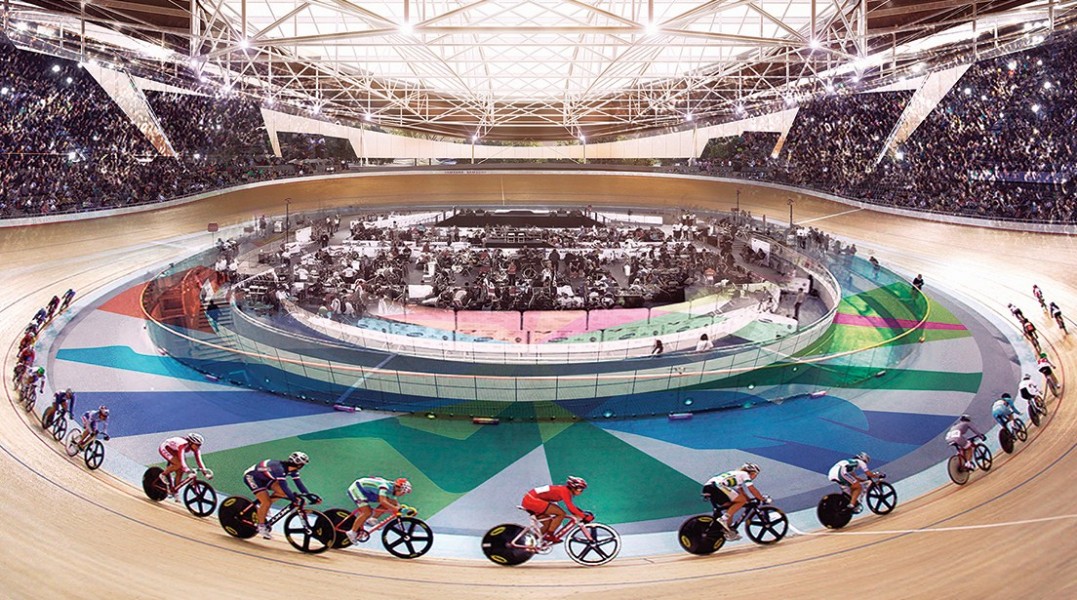Understanding Velodromes: A Brief Overview
Velodromes are captivating cycling facilities, designed with banked tracks for the unique experience of riding a bicycle at high speeds. These specialized venues have a rich history, dating back to the late 19th century, and have since become an integral part of competitive cycling events worldwide. The steeply banked turns and long, smooth straights of velodromes offer a thrilling and exhilarating experience for cyclists of all skill levels, making them a popular destination for those looking to ride in a velodrome.
Choosing the Right Velodrome: Factors to Consider
When selecting a velodrome for riding, there are several factors to take into account to ensure an enjoyable and rewarding experience. First, consider the track size, which can vary from 137 meters to 500 meters in circumference. Smaller velodromes typically offer tighter turns and more technical riding, while larger ones provide greater speed and a more forgiving riding experience. The banking angle is another critical factor, as steeper banks can be intimidating for beginners but offer increased speed for experienced riders.
Location plays a significant role in choosing a velodrome, as you’ll want to find a facility that is easily accessible and convenient for regular visits. Additionally, consider the availability of rental bikes and coaching programs, as these resources can be invaluable for those new to velodrome riding. Many velodromes offer beginner-friendly sessions, equipment rentals, and coaching programs, making it easier for riders to get started and progress in their velodrome riding skills.
Preparing for Your First Velodrome Ride: Essential Gear and Equipment
Riding in a velodrome requires specific gear and equipment to ensure a safe and enjoyable experience. First and foremost, a fixed-gear bicycle is necessary, as velodromes do not allow bikes with freewheels. These bikes, also known as track bikes, have a fixed cog that directly connects the pedals to the rear wheel, allowing for a smooth, direct power transfer. Ensure that the bike is properly set up and adjusted for your body size and riding style, including saddle height, handlebar reach, and gear ratio.
Additionally, a well-fitting helmet is crucial for protecting your head in the event of a fall. Opt for a helmet specifically designed for track cycling, as these models typically offer increased ventilation and aerodynamics. Comfortable, form-fitting clothing is also essential, as loose or baggy garments can become caught in the bike’s components or hinder your movement. Wear cycling shorts with a chamois for added comfort and breathability, and consider investing in a skinsuit for optimal aerodynamics and performance.
Getting Started: Basic Skills and Techniques for Velodrome Riding
Mastering the fundamentals of velodrome riding is essential for a safe and enjoyable experience. Begin by familiarizing yourself with track etiquette, which typically includes riding clockwise, passing on the right, and yielding to faster riders. Additionally, practice starting and stopping techniques, as velodromes often have specific areas for these maneuvers. When starting, clip into your pedals and build momentum before gradually increasing your speed. To stop, gradually reduce your speed and use the brakes sparingly, as excessive braking can cause instability.
Cornering is a critical skill for velodrome riding, as the banked turns allow for higher speeds and smoother transitions. Lean your bike into the turns, keeping your body upright and centered over the bike. Maintain a consistent line and speed, and avoid crossing wheels with other riders. Drafting, or riding closely behind another rider, can help conserve energy and improve speed. However, ensure that you maintain a safe distance and are aware of the rider in front of you to avoid collisions.
How to Rent a Bike and Join a Coaching Program at a Velodrome
Renting a bike and joining a coaching program at a velodrome are excellent ways to get started with this thrilling cycling experience. To rent a bike, contact the velodrome in advance to inquire about availability and requirements. Typically, you will need to provide identification and sign a waiver. Rental bikes are usually equipped with basic necessities, such as pedals and a lock, but it’s essential to double-check beforehand.
Joining a coaching program offers numerous benefits, including structured training, guidance from experienced coaches, and the opportunity to learn from other riders. Many velodromes provide beginner-friendly sessions and coaching programs, which often cover essential skills and techniques for riding in a velodrome. These programs typically cater to various skill levels, ensuring that riders can progress at their own pace and achieve their goals.
Advanced Velodrome Skills: Taking Your Riding to the Next Level
Once you’ve mastered the fundamentals of velodrome riding, consider exploring advanced skills to further enhance your experience. Sprinting, pursuits, and mass start races are popular disciplines that can challenge and excite riders looking to push their limits.
Sprinting involves short, high-intensity efforts, often lasting between 10 and 30 seconds. To improve your sprinting abilities, focus on developing explosive power and refining your technique. Pursuits, on the other hand, are longer, more strategic events where riders aim to catch their opponents or achieve the fastest time over a set distance. Training for pursuits typically involves structured interval sessions, strength work, and pacing strategy analysis.
Mass start races, such as points races and scratch races, combine the thrill of sprinting and pursuits in a dynamic, unpredictable format. These events require a strong understanding of race tactics, positioning, and the ability to navigate a large group of riders. To excel in mass start races, practice your bike handling skills, learn to read races, and work on your anaerobic endurance.
For further learning and practice, consider joining a local cycling club, attending velodrome training sessions, or participating in competitive events. Numerous resources, such as books, online articles, and training plans, are also available to help you refine your skills and reach your velodrome riding goals.
Safety Considerations: Ensuring a Secure Velodrome Experience
Riding in a velodrome can be an adrenaline-pumping experience, but safety should always be a top priority. To ensure a secure velodrome experience, follow rules and regulations, be aware of other riders, and maintain your equipment in good condition.
Familiarize yourself with the velodrome’s rules and guidelines, which often include speed limits, passing etiquette, and specific areas for starting and stopping. Adhere to these rules to minimize the risk of accidents and maintain a harmonious environment for all riders. Being aware of your surroundings and other riders is crucial for preventing collisions and maintaining a consistent line and speed. Always keep an eye on the riders around you and communicate your intentions clearly through hand signals or verbal cues.
Maintaining your equipment in good condition is essential for safety and performance. Regularly inspect your bike for wear and tear, and address any issues promptly. Ensure that your tires are properly inflated, your brakes are functioning correctly, and your chain is clean and lubricated. Wearing a well-fitting helmet and appropriate clothing can also contribute to your safety and comfort during velodrome rides.
Enjoying the Velodrome Experience: Making the Most of Your Time on the Track
Riding in a velodrome offers a unique and exhilarating experience, filled with challenges and rewards. To fully enjoy your velodrome experience, focus on staying motivated, tracking your progress, and connecting with the local cycling community.
Staying motivated can be as simple as setting personal goals and challenging yourself to improve. Consider tracking your lap times, monitoring your power output, or working on specific skills during each session. By setting measurable objectives, you can maintain focus and enthusiasm for velodrome riding. Additionally, joining a local cycling club or training group can provide a supportive network of like-minded individuals who can help keep you motivated and accountable.
Tracking your progress is essential for measuring improvement and identifying areas for growth. Utilize tools such as a cycling computer, smartphone app, or a simple notebook to record your lap times, distances, and other relevant data. Regularly review your progress and adjust your training plan as needed to ensure continued growth and development. Celebrate your achievements and use setbacks as opportunities for learning and growth.
Connecting with the local cycling community can enrich your velodrome experience by providing opportunities for social interaction, skill sharing, and friendly competition. Attend local races, group rides, and events to meet other cyclists and expand your network. Engaging with the cycling community can also lead to valuable friendships, mentorships, and partnerships that can help you grow as a rider and an individual.








